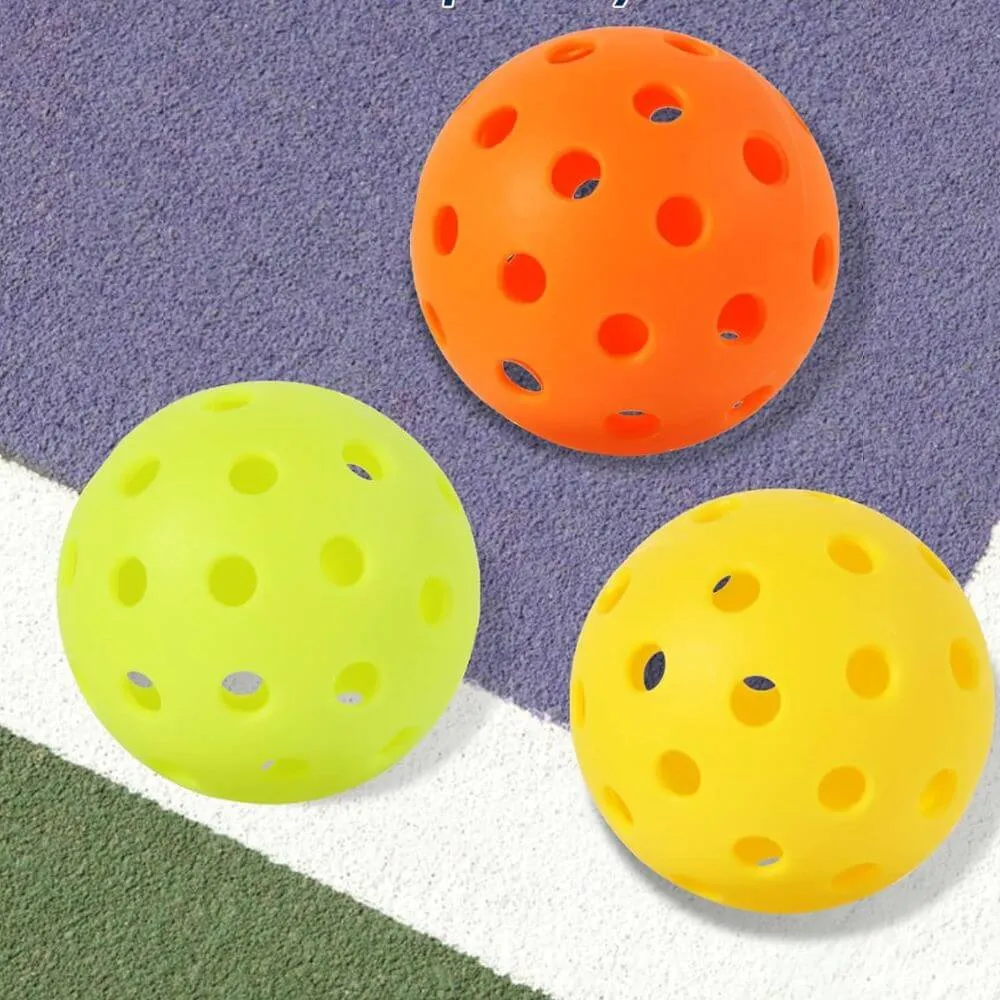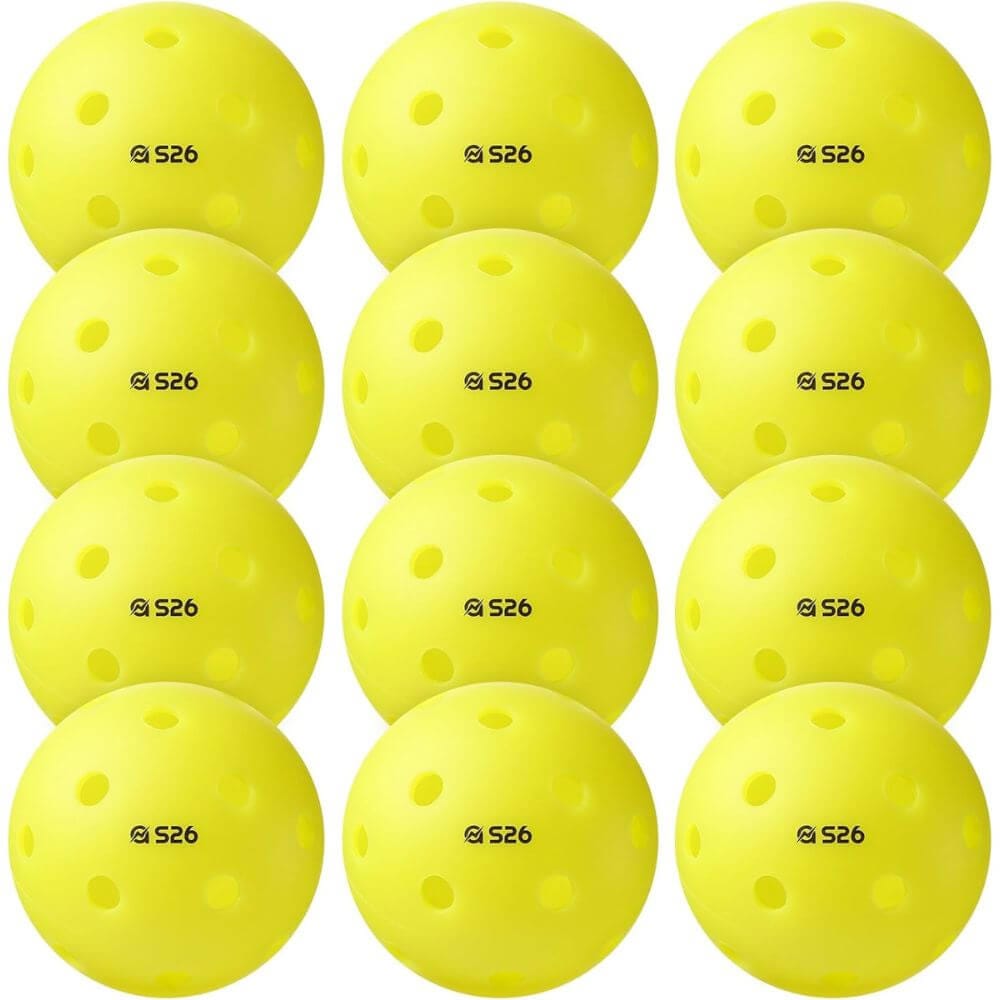Unveiling the Material & Construction: What is a Pickleball Made Of?
Pickleball, a sport that has surged in popularity over the past few years, combines elements of tennis, badminton, and table tennis. Central to the game is the pickleball itself, a unique piece of equipment that is designed to meet specific playing requirements. This article delves into the materials and construction processes that give pickleball its distinctive characteristics.
Key Takeaways:
- Understand the specific materials used in the construction of pickleballs.
- Learn the differences between indoor and outdoor pickleballs.
- Gain insight into the design considerations that impact the performance of pickleballs.
The Basics of Pickleball Material
Pickleball balls are crafted from a high-impact plastic known for its durability and ability to withstand repetitive play. The material is typically a non-compressible, hard plastic that ensures the ball maintains its shape and bounce over time. This plastic is often polyethylene or similar polymers, which are chosen for their resilience and lightweight properties.
The choice of material is crucial as it directly affects the ball's performance. A durable pickleball is essential for providing a consistent playing experience, whether the game takes place indoors or outdoors. The high-impact plastic is also resistant to cracking and chipping, which is vital for the longevity of the ball.
Pickleball Construction: A Detailed Look
The construction of a pickleball involves molding the hard plastic into a hollow sphere with a series of holes throughout its surface. These holes are strategically placed to control the ball's flight and stability. The process ensures that each pickleball size and weight adheres to official regulations, providing a standard for competitive play.
Pickleball balls are created using an injection molding process where molten plastic is injected into a mold that shapes the ball. Once cooled, the two halves of the ball are joined together, creating a seamless and smooth surface pickleball. This method of construction is designed to produce a ball that is both robust and reliable.
What is the Difference in Pickleball Balls? Pickleball Review
Indoor Pickleball: Tailored for the Indoor Court
Indoor pickleballs are designed with a softer and more flexible plastic compared to their outdoor counterparts. This is because indoor playing surfaces are typically smoother and less abrasive. The softer material helps to reduce the noise level, which is an important consideration in enclosed spaces.
Moreover, indoor pickleballs usually have larger holes to compensate for the lack of environmental factors like wind. This design allows for better control and a slower pace, which is ideal for the indoor game where space is more confined.
Best Indoor Pickleball
Outdoor Pickleball: Built to Endure the Elements
Outdoor pickleballs, on the other hand, are made from a harder plastic to withstand the rougher playing surfaces and variable weather conditions. The smaller, more numerous holes in an outdoor pickleball help it maintain a straighter path in windy conditions.
The material used for outdoor pickleballs is also UV-resistant to prevent the ball from degrading in the sun. This ensures that the pickleball remains durable and retains its playability even after extended exposure to the elements.
Best Outdoor Pickleballs
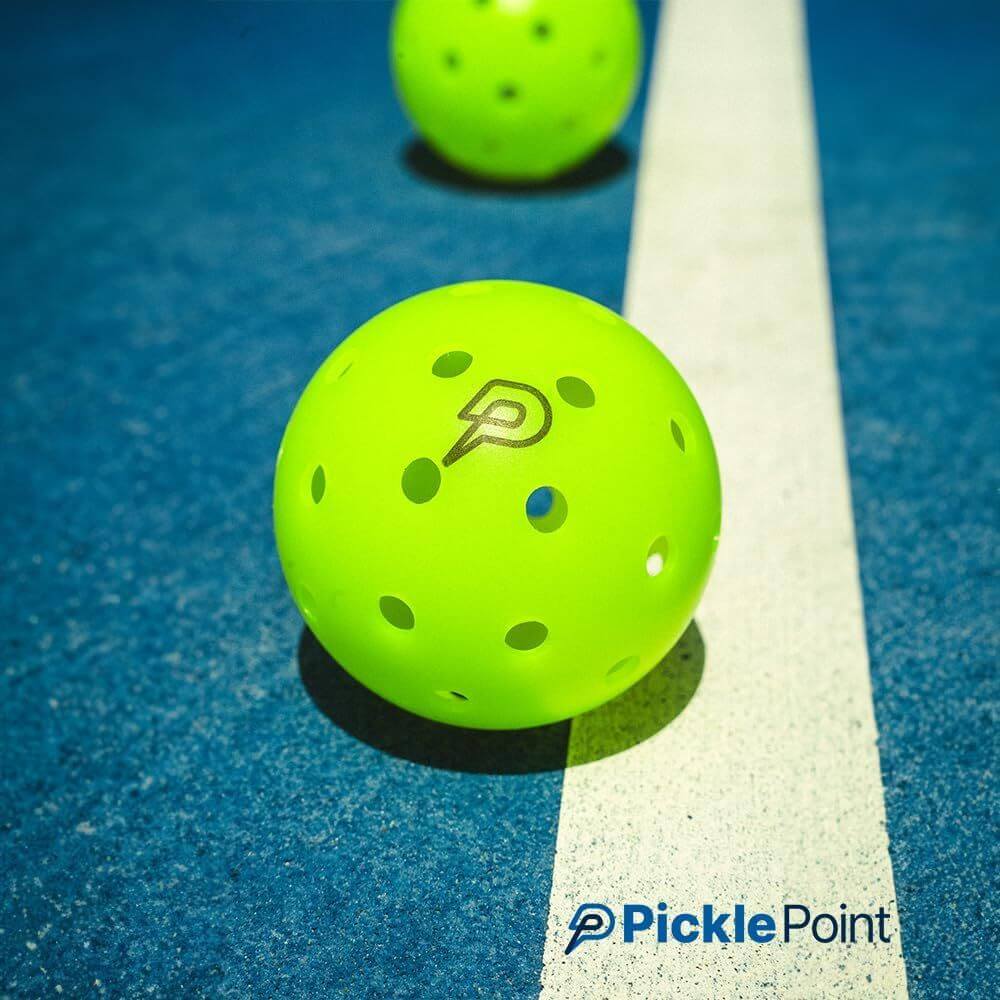
PICKLEPOINT Sh4d0w Pickleball Balls | 12 Pack | 40-Hole Outdoor Pickleball | USAPA Approved
Evolution of Pickleball Materials
The journey of pickleball materials from their inception to the present day is a testament to the sport's evolution. Initially, pickleballs were crafted from a relatively basic form of hard plastic, which provided durability but lacked the nuanced performance characteristics seen in today's models. As the sport gained popularity, manufacturers began experimenting with various types of compressible materials to enhance the ball's responsiveness and playability. This shift not only improved the game's dynamics but also catered to players' preferences for a ball that could deliver consistent bounce and flight characteristics across different playing environments.
Advancements in material science have further refined the composition of pickleballs, leading to the development of specialized polymers that withstand repetitive impacts and temperature fluctuations. These modern hard plastic pickleballs are engineered to maintain their shape and weight, ensuring a reliable experience for players. The incorporation of UV-resistant materials has also become a standard, particularly for outdoor pickleballs, to prevent degradation from prolonged sun exposure. As the sport continues to grow, it is likely that we will witness further innovations in pickleball materials, each aiming to elevate the game to new heights.
Pickleball FAQs: Addressing Common Queries
Pickleball FAQs are an essential resource for both new and seasoned players seeking to understand the finer points of the game. One of the most frequent questions revolves around the differences between pickleballs and wiffle balls. While both may appear similar at a glance, pickleballs are specifically designed for the sport with precise pickleball weight and size regulations that dictate their performance. Wiffle balls, on the other hand, are typically lighter and not bound by the same standards, making them unsuitable for official pickleball play.
Another common inquiry pertains to the ideal pickleball weight and how it affects gameplay. Regulation pickleballs must weigh between 0.78 and 0.935 ounces (22.1 and 26.5 grams), a range that ensures a balance between control and power. The weight of a pickleball is a critical factor that influences its flight path, speed, and the force required to strike the ball effectively. Players often experiment with different weights to find the ball that best complements their playing style, whether they prioritize precision or power in their game. As the sport continues to mature, the pickleball FAQs section serves as a dynamic repository of knowledge, adapting to address the evolving aspects of pickleball equipment and rules.
Pickleball Size & Weight Standards
The official size and weight of a pickleball are regulated to ensure fair play. A standard pickleball measures 2.874 inches in diameter and weighs between 0.78 and 0.935 ounces. These dimensions are critical for the ball's performance, affecting its bounce, flight, and response to the pickleball paddle.
Manufacturers must adhere to these specifications to produce balls that are suitable for official tournaments and casual play alike. The precise size and weight contribute to the ball's balance and aerodynamics, which are essential for a consistent game.
The Color Palette of Pickleballs
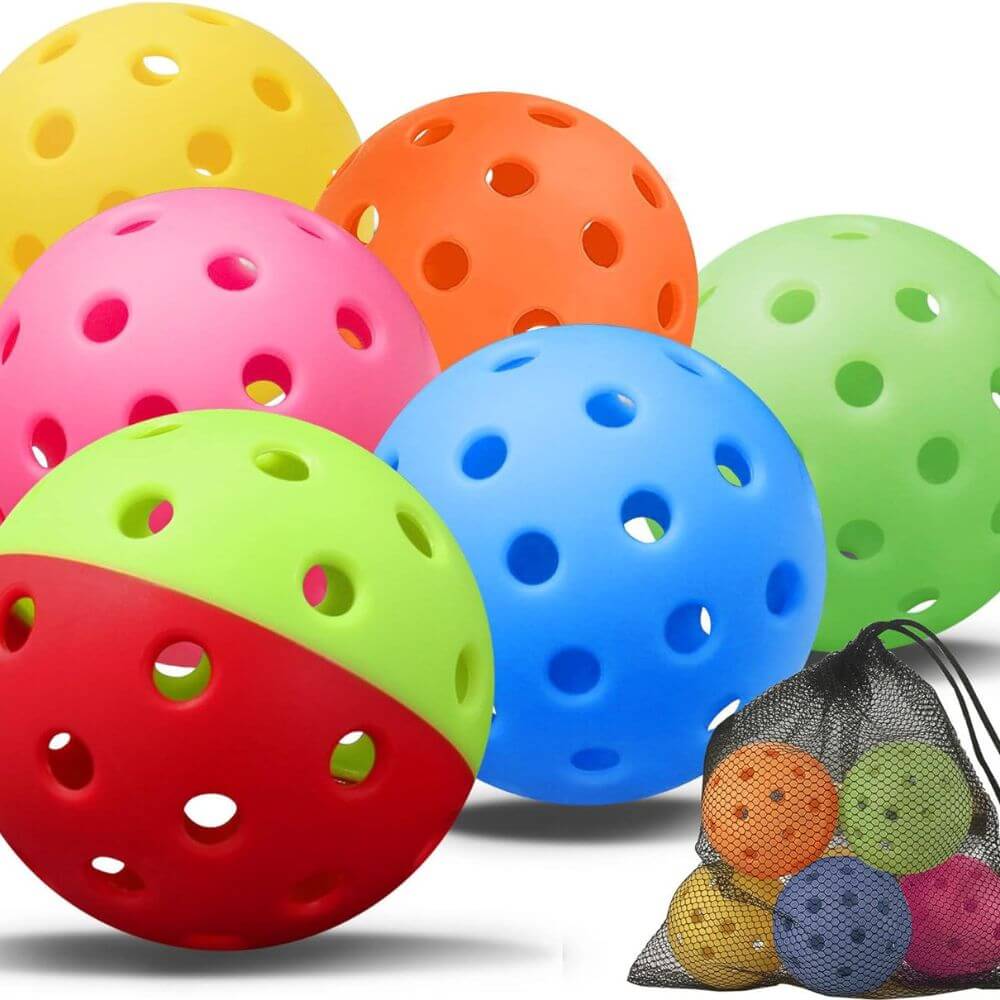
Pickleball colors are varied, with balls available in a range of hues from bright to neutral. The color of the ball can impact its visibility against different playing surfaces and backgrounds. Brightly colored balls, such as neon green or yellow, are often preferred for better visibility, especially in outdoor settings.
The choice of color is not just a matter of aesthetics but also plays a practical role in the game. Players must be able to easily track the ball during play, and the right color can make a significant difference in different lighting conditions.
Differences Between Indoor & Outdoor Pickleballs
The differences between indoor and outdoor pickleballs are tailored to the specific conditions of each playing environment. Indoor pickleballs are softer and larger-holed for quieter play and control, while outdoor pickleballs are harder, smaller-holed, and UV-resistant for durability and performance in the elements.
These variations ensure that players have the appropriate equipment for their playing conditions, which is essential for maintaining the integrity and enjoyment of the game.
Pickleballs vs. Wiffle Balls: Understanding the Distinctions
While pickleballs and wiffle balls may appear similar at first glance, there are distinct differences in their design and intended use. Wiffle balls are typically made for baseball training and have oblong holes, whereas pickleballs have round holes and are designed specifically for the sport of pickleball.
The construction and material choices for pickleballs are optimized for bounce, durability, and flight characteristics that suit the fast-paced nature of pickleball play. This sets them apart from wiffle balls and other similar sports equipment.
Summary
Pickleball is a sport that requires equipment designed for precision and durability. The balls are made from high-impact, non-compressible plastic materials like polyethylene, ensuring they can withstand the rigors of play. The construction process involves injection molding to create a smooth surface pickleball with strategically placed holes for optimal performance. Indoor and outdoor pickleballs are designed with specific conditions in mind, from the material's flexibility to the size of the holes. Understanding these intricacies helps players choose the right ball for their game and ensures a consistent and enjoyable playing experience.
FAQ Section
Q: What is the standard size and weight of a pickleball? A: A standard pickleball measures 2.874 inches in diameter and weighs between 0.78 and 0.935 ounces. These specifications are regulated to ensure consistency in play.
Q: Can the same pickleball be used for both indoor and outdoor play? A: While you can technically use any pickleball for both indoor and outdoor play, it is recommended to use balls designed specifically for the environment in which you are playing. Indoor pickleballs are softer with larger holes, and outdoor pickleballs are harder with smaller holes to suit their respective playing conditions.
Q: Why do pickleballs have holes? A: The holes in a pickleball are designed to control the ball's flight and stability. They help the ball move through the air with a predictable trajectory and reduce wind resistance, which is particularly important for outdoor play.
Thanks for reading and get your pickle on!
Related Reads:
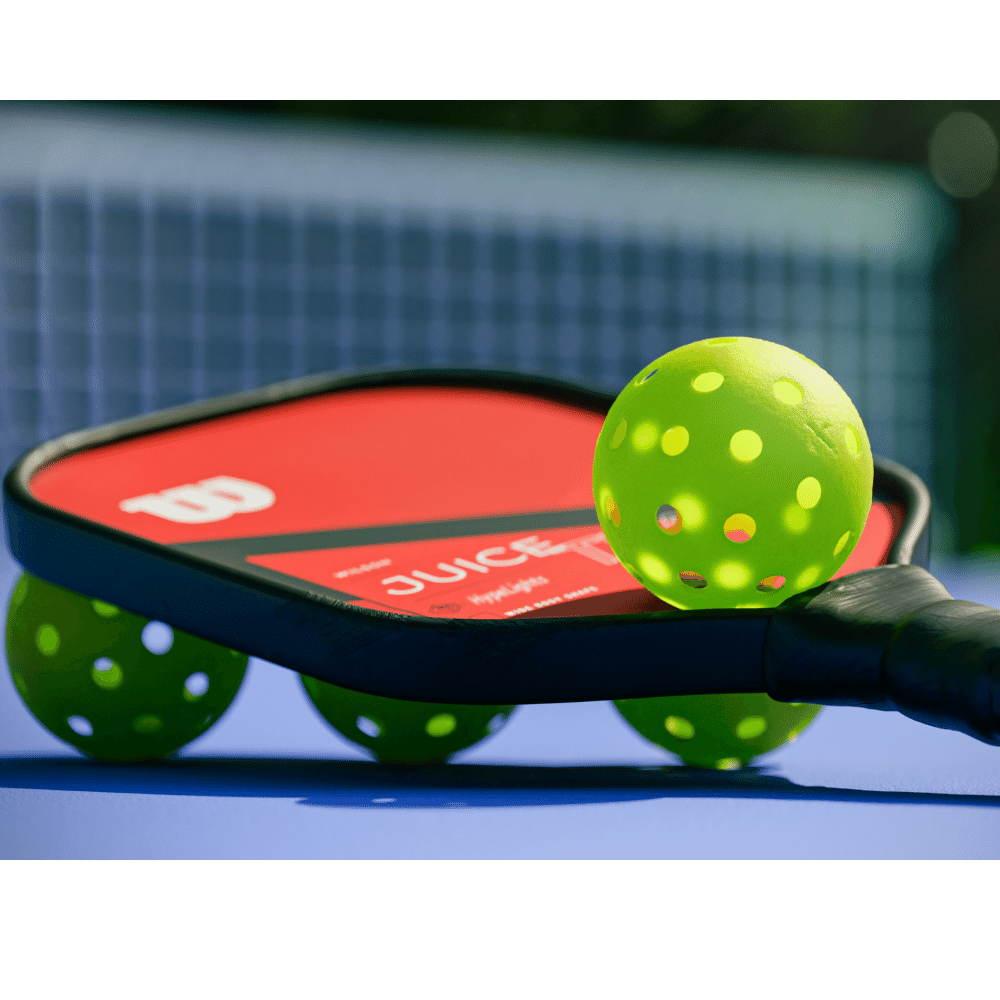
Serve, Smash & Score with TOP Ranked Pickleball Paddles!

